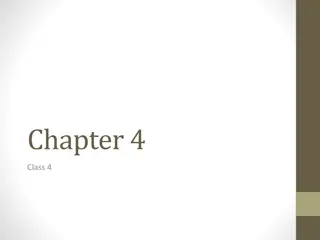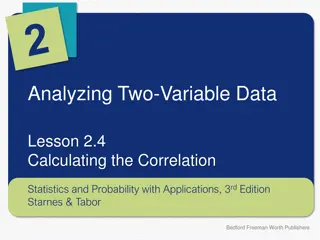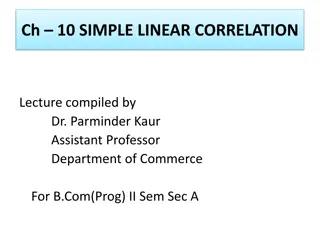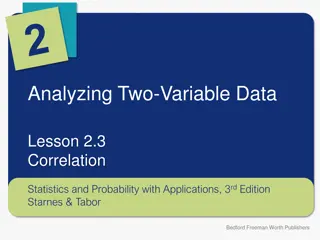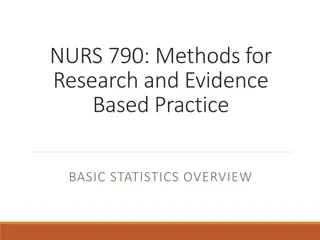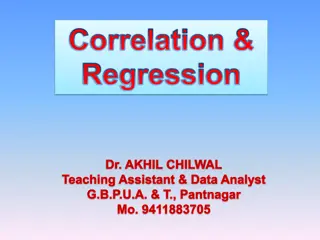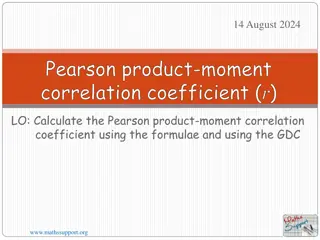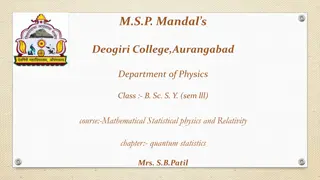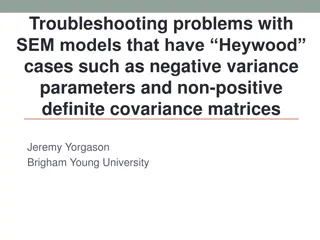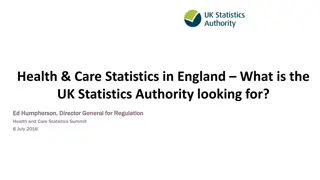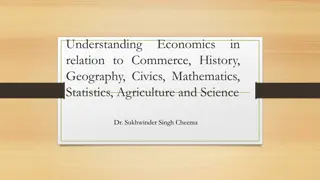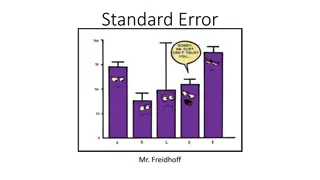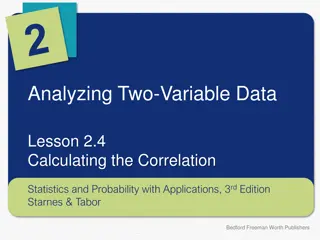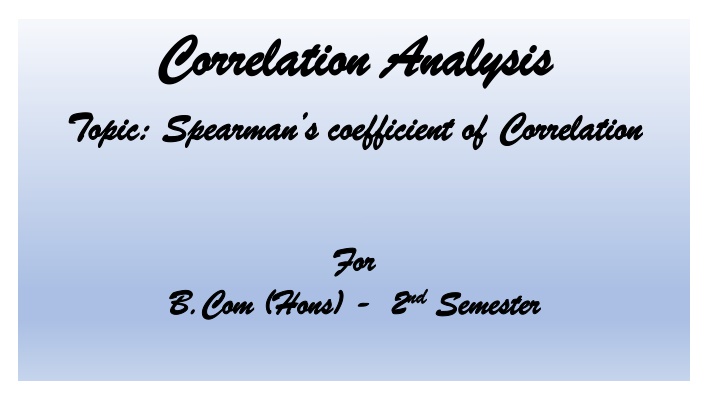
Spearman Rank Correlation Analysis: Understanding and Application
Learn about Spearman's coefficient of correlation, its importance in analyzing the strength and direction of associations between ranked variables, and the process of ranking data systematically to calculate the Spearman rank correlation coefficient. Explore how to interpret the coefficient values and apply them in practical scenarios for insightful insights.
Download Presentation

Please find below an Image/Link to download the presentation.
The content on the website is provided AS IS for your information and personal use only. It may not be sold, licensed, or shared on other websites without obtaining consent from the author. If you encounter any issues during the download, it is possible that the publisher has removed the file from their server.
You are allowed to download the files provided on this website for personal or commercial use, subject to the condition that they are used lawfully. All files are the property of their respective owners.
The content on the website is provided AS IS for your information and personal use only. It may not be sold, licensed, or shared on other websites without obtaining consent from the author.
E N D
Presentation Transcript
Correlation Analysis Correlation Analysis Topic: Spearman s coefficient of Correlation Topic: Spearman s coefficient of Correlation For For (Hons) - - 2 2nd nd Semester B.Com B.Com (Hons) Semester
The represented by or by r, it is a nonparametric measure of the strength and direction of the association that exists between two ranked variables. It determines the degree to which a relationship is monotonic, i.e., whether there is a monotonic component of the association between two continuous or ordered variables. Correlation Coefficient is Spearman s
Spearman Ranking of the Data We must rank the data under consideration before proceeding with the Spearman s Rank Correlation evaluation. This is necessary because we need to compare whether on increasing one variable, the other follows a monotonic relation (increases or decreases regularly) with respect to it or not.
In order to understand systematically the practical aspect, we categorize as: Categories When ranks are given When ranks are not given Distinct Ranks Repeated Ranks
The Formula for Spearman Rank Correlation 6 ?2 ?(?2 1) ? ?? = 1 where N is the number of data points of the two variables and D is the difference in the ranks of the element of each random variable considered. The Spearman correlation coefficient, r or , can take values from +1 to -1.
A r of +1 indicates a perfect association of ranks. A r of zero indicates no association between ranks and r of -1 indicates a perfect negative association of ranks. The closer is to zero, the weaker the association between the ranks.
When Ranks are given In a Dance Competition, two judges gave the following Ranks to 10 participants: Example : Ist Judge 3 4 7 8 1 5 2 9 10 6 IInd Judge 1 3 10 9 4 6 5 2 8 7 D2 Ist Judge R1 3 IInd Judge R2 1 D = R1 R2 +2 4 4 3 +1 1 7 10 -3 9 8 9 -1 1 1 4 -3 9 5 6 -1 1 2 5 -3 9 9 2 +7 49 10 8 +2 4 6 7 +1 1 ?2 = 88 ? = 0 N = 10 N =10
6?2 ?(?2 1) ? = 1 6 88 10(102 1) = 1 528 = 1 10(100 1) = 1 528 990 = 990 528 990 = 462 990 = + 0.467 There is low degree of positive coefficient of correlation between two judges.
When Ranks are not given Discrete Ranks : When there is no repetition in the values of two variables, the assigned rank will be different for every variable. At every level in this method, we need to compare the values of the two variables. The method of ranking assigns such levels to each value in the dataset so that we can easily compare it. Assign number 1 to n (the number of data points) corresponding to the variable values in the order highest to lowest or lowest to highest in both series.
Calculate Spearmans Rank Coefficient of correlation between two variables X and Y : Example : X 24 30 50 25 27 45 42 40 19 37 Y 30 40 42 36 38 28 44 52 80 35 D2 X Y R1 9 R2 8 D = R1 R2 +1 24 30 1 30 40 6 4 +2 4 50 42 1 3 -2 4 25 36 8 6 +2 4 27 38 7 5 +2 4 45 28 2 9 -7 49 42 44 3 2 +1 1 40 52 4 1 +3 9 19 80 10 10 0 0 37 35 5 7 -2 4 ?2 = 80 ? = 10 ? = 10 ? 4= 0
6?2 ?(?2 1) ? = 1 6 80 10(102 1) = 1 480 = 1 10(100 1) = 1 480 990 = 990 480 990 = 510 990 = + 0.515
In the next part, we will discuss about finding the Spearman s coefficient of Correlation when the ranks are not given as well as repeated.



